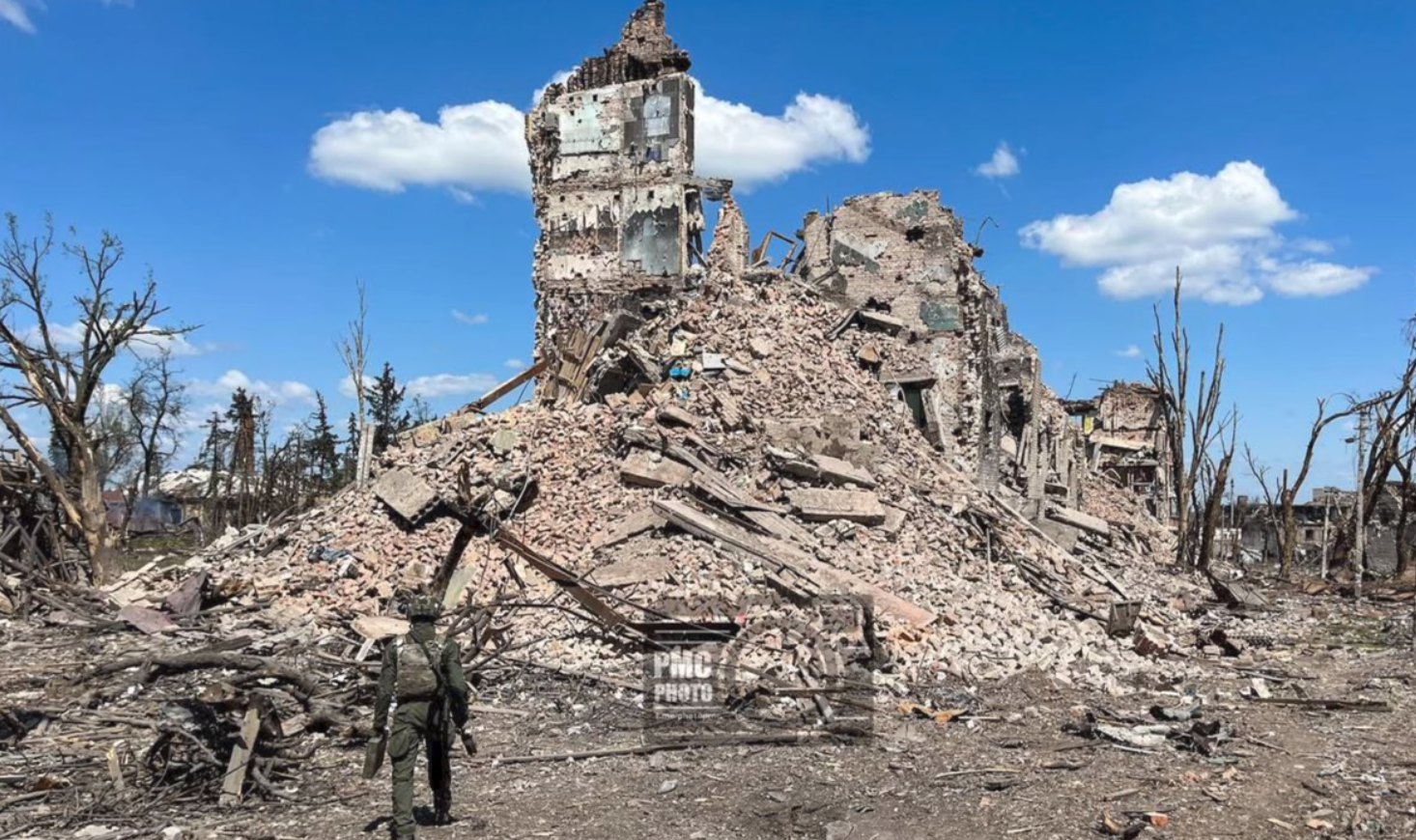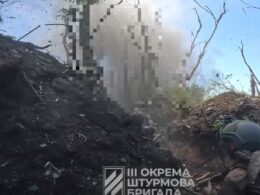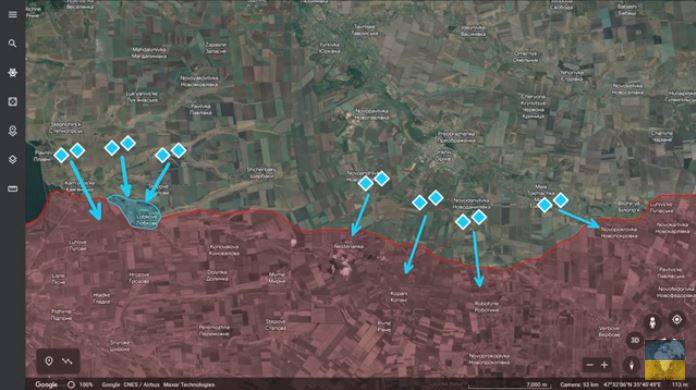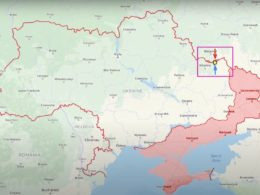Day 568. 15 September
The biggest news on the 14 September report again comes from Crimea because, as promised by the Head of the Ukrainian Air Force, the strike on 13 September was just the beginning.
First of all, explosions were reported in Yevpatoria. Russian sources reported that Ukrainians launched at least ten kamikaze drones. Later, the Russian Ministry of Defense clarified that there were 11 drones and claimed that all of them were shot down, even though the footage filmed by the local residents clearly shows plumes of smoke and explosions.
The analysts concluded that either one drone hit an ammunition depot and caused a secondary detonation or multiple drones hit the same target. At first glance, the explosion looks too powerful for a drone, however, as mentioned by some Russian sources, this time, Ukrainians used much bigger ones.

As it turned out, this was just the first stage of the operation. As reported by the spokesman of the Ukrainian Intelligence, the targets of the drone strikes were the radiolocation systems of the air defense battalion located in the region.
The radars are the eyes of the air defense system. Destroying them with drones, Ukrainians completely blinded the air defense near Yevpatoria.
Next, Ukrainians used the anti-ship missile Neptun to remove the S-400 missile launchers. It’s been speculated Ukrainians used precisely the same tactic as last time, when they destroyed an air defense system in Cape Tarkhankut, namely, they got close to the shore on their boats equipped with Neptun missiles and conducted the strike from a relatively short distance in coordination with reconnaissance drones.
It looks like it is true because if we look at the recently released satellite footage of the site, we can see traces of a fire not only around the lot but also south of it.
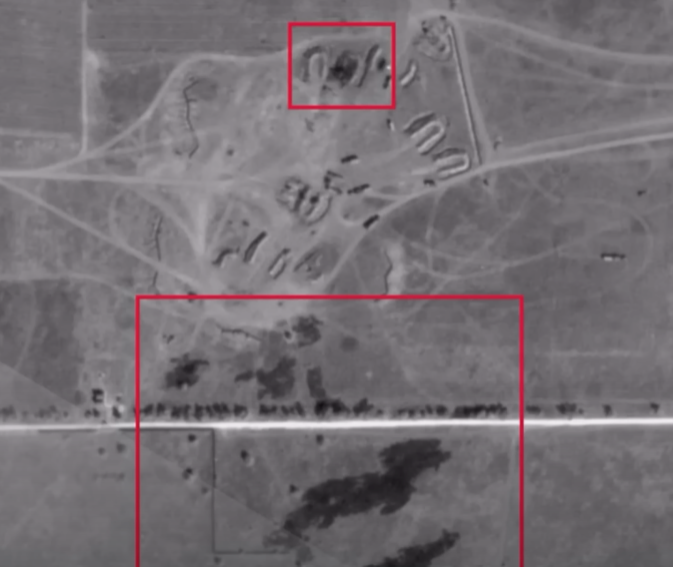
After the first hit, Russians tried to evacuate all other missile launchers urgently, but Ukrainians caught them on the move. Such rapid adjustments would only be possible if Ukrainians operated from a short distance in coordination with a reconnaissance drone.
As a result, Russians lost the whole S-400 air defense battalion, which cost more than $1.2 billion. Some Russian war correspondents noted that even though several missile launchers were evacuated, most of them weren’t and that the most important part of the air defense systems – the command center and radars – were destroyed together with the crew. Interestingly, some sources circulated footage of Russian tourists in Crimea who posted pictures online near these air defense systems with geolocation, which leaked the precise location of the air defense system.
Russian analysts pointed out a frightening trend and started raising the alarm that Ukrainians are consistently destroying the Russian air defense in Crimea – first near Rozdolne, then near Olenivka, near Sevastopol on 13 September, and near Yevpatoria on 14 September.
They noted that by weakening the air defense of the peninsula significantly, the Russian Black Sea Fleet would be helpless in the face of attacks from the air and would be gradually wiped out.
On 14 September, Ukrainians conducted a series of strikes on the Russian warships as well. The target of the first drone strike became the ballistic-missile-launching warship “Sergey Kotov.” Russian sources reported that Ukrainians attacked the ship with five drones. Ukrainian Special Forces released combat footage of the strike showing how the drones approached the vessel. Eventually, all five drones were reportedly shot down.
The target of the second strike became the ballistic-missile-launching warship “Vasiliy Bykov.” It was reported that this time, Ukrainians used just one drone. Russian sources confirmed that the drone successfully hit the ship’s board.
At the moment, the information about the extent of the damage is very limited, however, based on the fact that the Ukrainian marine kamikaze drones are equipped with FAB100/250 bombs, the chances of getting away with no damage are very low.
Trending Now
More information also became available about the extent of the damage to the Russian assault landing ship “Minsk” that Ukrainians hit yesterday with a Storm Shadow missile. The footage confirms that the top part collapsed and the whole ship was on fire, so repairing it is infeasible.
As you can see, Ukrainians have developed a lot of very sophisticated tactics for conducting the strikes on Crimea successfully. This is the result of months of seemingly futile strikes with cheap Mugins.

After Ukrainians collected all the necessary information about the disposition of the Russian forces on the peninsula and the reaction time and protocols for facing the strikes, Ukrainians were ready to conduct the real strikes.
Now Ukrainians are effectively utilizing marine and aerial drones to divert attention and destroy targets, and the dual purpose is used to confuse Russians even more. Besides, Ukrainians are conducting missile strikes from the ships, from the shore, and from the air, combining various types of missiles such as decoys for unloading air defense, HARMs for destroying radars, and other types for targeting the navy.
The sheer number of combinations of weapons, attack vectors, and locations allows Ukrainians to make every strike unique and unexpected.
In our daily frontline report, we pair up with the military blogger Reporting from Ukraine to keep you informed about what is happening on the battlefield in the Russo-Ukrainian war.
Read also:
- British intel: Sevastopol missile strikes deal major blow to Russia’s Black Sea fleet
- Ukrainian maritime kamikaze drones attack Russian corvette in the Black Sea
- Stratcom: Ukraine damages two Russian patrol ships in the Black Sea
- Frontline report: Ukraine’s sophisticated drone and missile attack destroys two Russian Navy ships in Sevastopol shipyard

